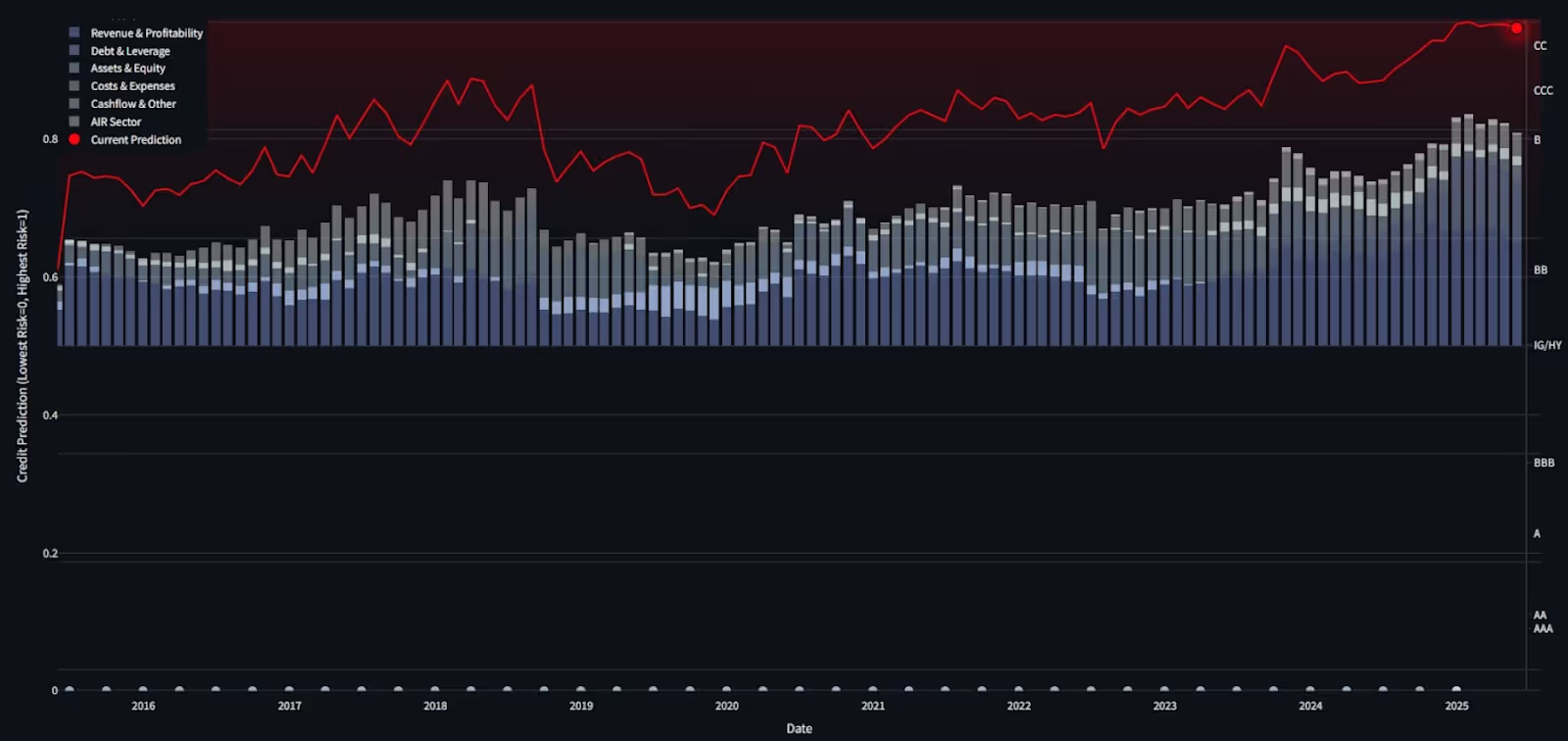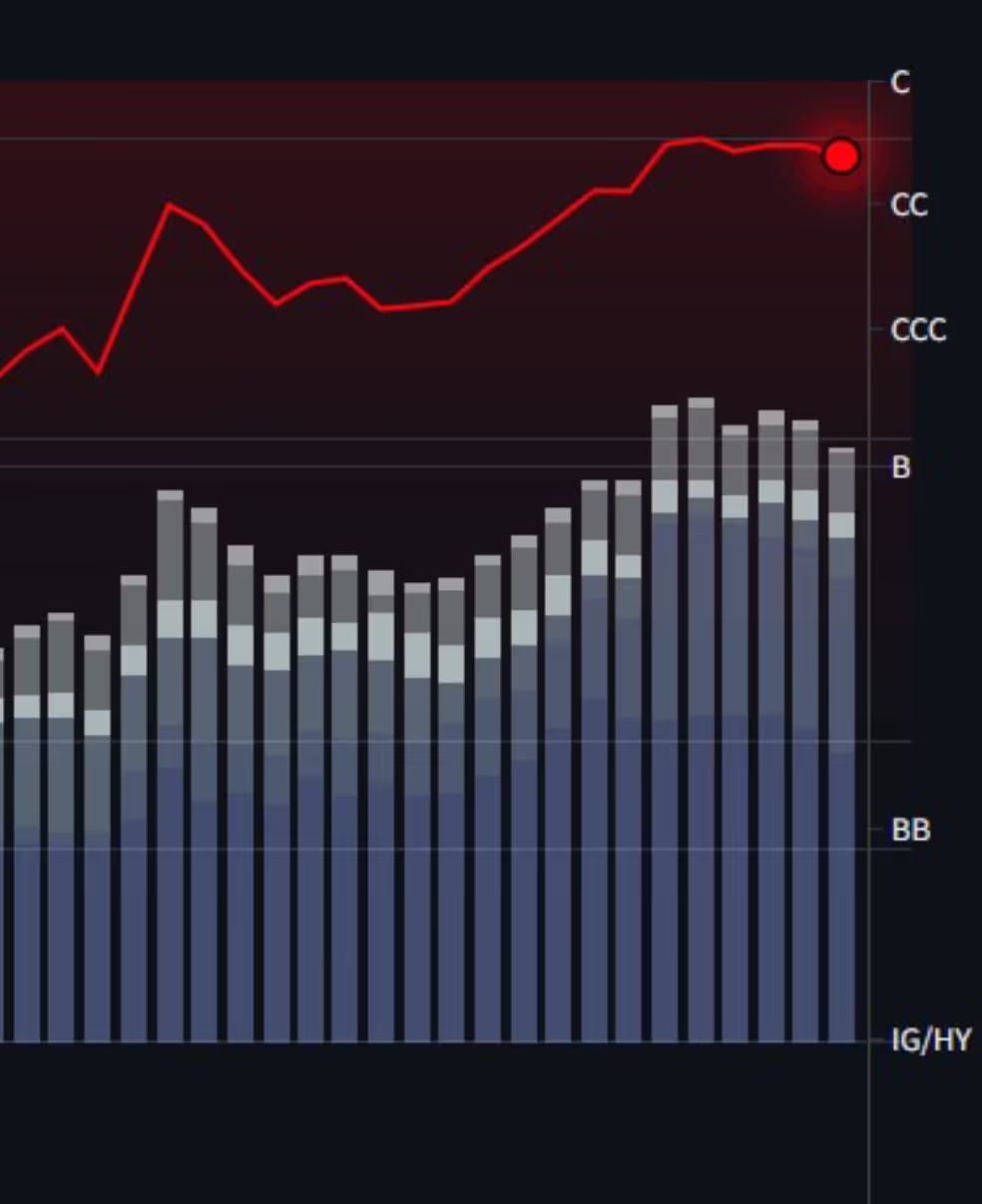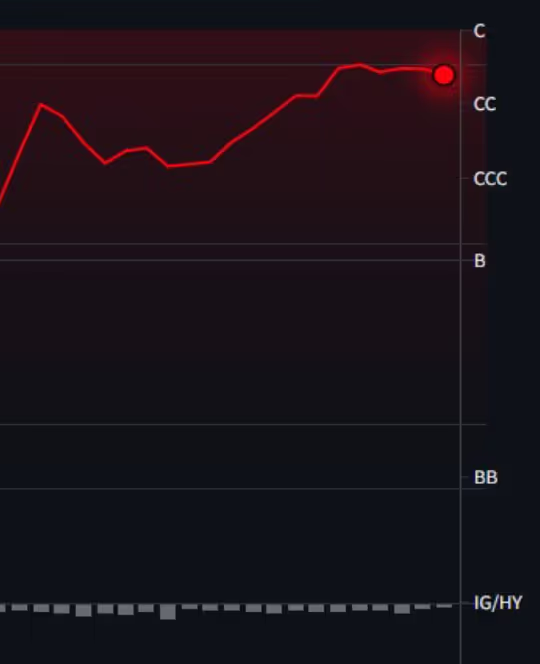
The Trump Administration's campaign to end government support of the CHIPS Act and uncertainty around trade and tariff policies have triggered Wolfspeed’s (WOLF) apparent final decline, as its stock price approaches $1 per share among widespread reports of a Chapter 11 filing. This has been a long time coming: over the past decade WOLF reported an unbroken string of annual losses, and after peaking at $114 in 2022 its shares have fallen steady to their current near-extinction level. Yet even with this grim history, as recently as June 2023 the company was able to access the capital markets, selling $1.25 billion of senior notes. This came on top of other issues sold in previous years.
The 2023 bonds were sold with chunky yields, so the buyers were evidently aware that they were assuming a significant level of risk. But we can be sure they were not anticipating a bankruptcy within the next two years. Was this wipeout avoidable? In a word, yes. In this post we show how AIR’s next gen Machine Learning credit model assigned the company a high yield-equivalent Risk Score as far back as 2016, with the Score’s deterioration towards its current CC level beginning in 2019 - three years before its last bond sale. We also demonstrate how clients can use our interactive interface to generate further insights into an entity’s credit strength and its drivers.
AIR’s AI-based credit ratings solution is designed to expressly meet the needs of credit investors.
Our Credit Risk Scores are generated by machine learning models that have been trained on over 20 years of data. The Scores are updated daily to reflect all available information, while the model itself is recalibrated monthly. The model’s key inputs include company financial statements, sector specific features, and real-time signals such as executive turnover, and geopolitical events. The Risk Scores reflect the probability of default, creditor-adverse liability management events, and credit spread blowouts.
The Scores are scaled from 0.00 to 1.00, and are mapped onto a standard rating scale for ease of comparison with clients’ other internal and external metrics.
Figure 1 shows AIR’s entity-level analytical screen for WOLF. Since the coverage period began in June 2015, WOLF’s AIR Score (the red line) has been at the BB level or lower, i.e., deep in the speculative grade category. The Score began its sustained decline in 2019, crossing into the single-B (“real junk”) territory in 2020. By the time WOLF sold its last bond issue in 2023, it was at the CCC level.

Credit market professionals often use trends in a company’s stock price as a quick-and-easy early warning signal. This approach did not work out well for Wolfspeed’s investors. At the time of the 2023 bond issue the shares, while down somewhat from their previous peaks, were still trading at over $64 (Figure 2).

Let’s return to Figure 1 to see how clients can use the drivers of the company’s AIR Score to gain further insights into its credit standing.
The score’s components are listed in the box in the upper left hand corner. Factors such as Revenue & Profitability, Debt & Leverage, and Cashflow are familiar ones for credit practitioners, making interpretation of the score intuitive to investors and risk managers with all levels of experience.
One source of information is the orientation of the bars. For WOLF, the fact that all the bars are above the IG/HY line tell users that the company’s metrics are all consistent with those for high yield rated entities - a major red flag.
Users also need to know the relative contribution of the different factors to the Risk Score. This is signaled by their relative size with the bars. The two biggest drivers of WOLF’s “real junk” rating are its poor revenue and profitability (as noted, the company has lost money for years) and its high leverage.
One challenge with any risk metric is isolating the performance of an individual company from that of its sector. If a system can’t do this, then the impact of changes in a common sector driver, which is usually well known in the market, will mask changes in entity-specific developments, which often are not.
The energy sector provides an easy example: if the price of oil declines sharply, then risk signals (stock prices, spreads, volatilities, and, in the fullness of time, credit ratings) for almost all the entities in the sector will fall. Such generalized signals are of little value. What market participants need to know is which entities in the sector are the worst affected.
AIR solves this problem for credit professionals. Wolfspeed once again provides a good example of how this works.

To begin with, in Figure 3 we again show WOLF’s AIR Risk Score and drivers, but this time focusing on mid-2023 to the present. The relationship between the company’s deteriorating profitability and higher leverage (the two largest components of the bars) and its increasing Risk Score is clear.
One of the features of AIR’s user interface is that clients can use it to isolate single components of a Score in order to determine their importance. We do this in Figure 4. It covers the same period as in Figure 3, but this time only showing the Sector Score. The Score has been essentially unchanged over the past two years. No doubt other entities in the sector are feeling the pressure of changes in government policies. But the model’s takeaway - that Wolfspeed’s decline is due to company-specific factors - has been confirmed by its current near-bankrupt status.
In this post, we have shown how AIR’s AI-powered Risk Score and supporting user interface is uniquely designed to meet credit professionals’ requirement for a relevant, continually updated, and easy to interpret risk metric.

In our next post, we’ll build on this foundation and explore how AIR’s AI Credit Agents help analysts stay ahead by interpreting risk signals, generating credit reports and memos, and running forward-looking what-if scenarios.
To learn more, please follow us on Linkedin and check out our site: airplatforms.com
Disclaimer
The information provided (including ratings, credit scores, risk drivers, financial information and news summaries) is for informational purposes only and should not be construed as financial, investment, or other professional advice, or as a recommendation to buy, sell, or hold any security. This information is generated in part by AI models, and may contain errors, omissions or biases inherent in AI systems and/or the underlying data. This information is provided “AS IS” without any warranties. You are solely responsible for any decisions made or actions taken in reliance on this information, assume all associated risks and should conduct your own independent research and due diligence.